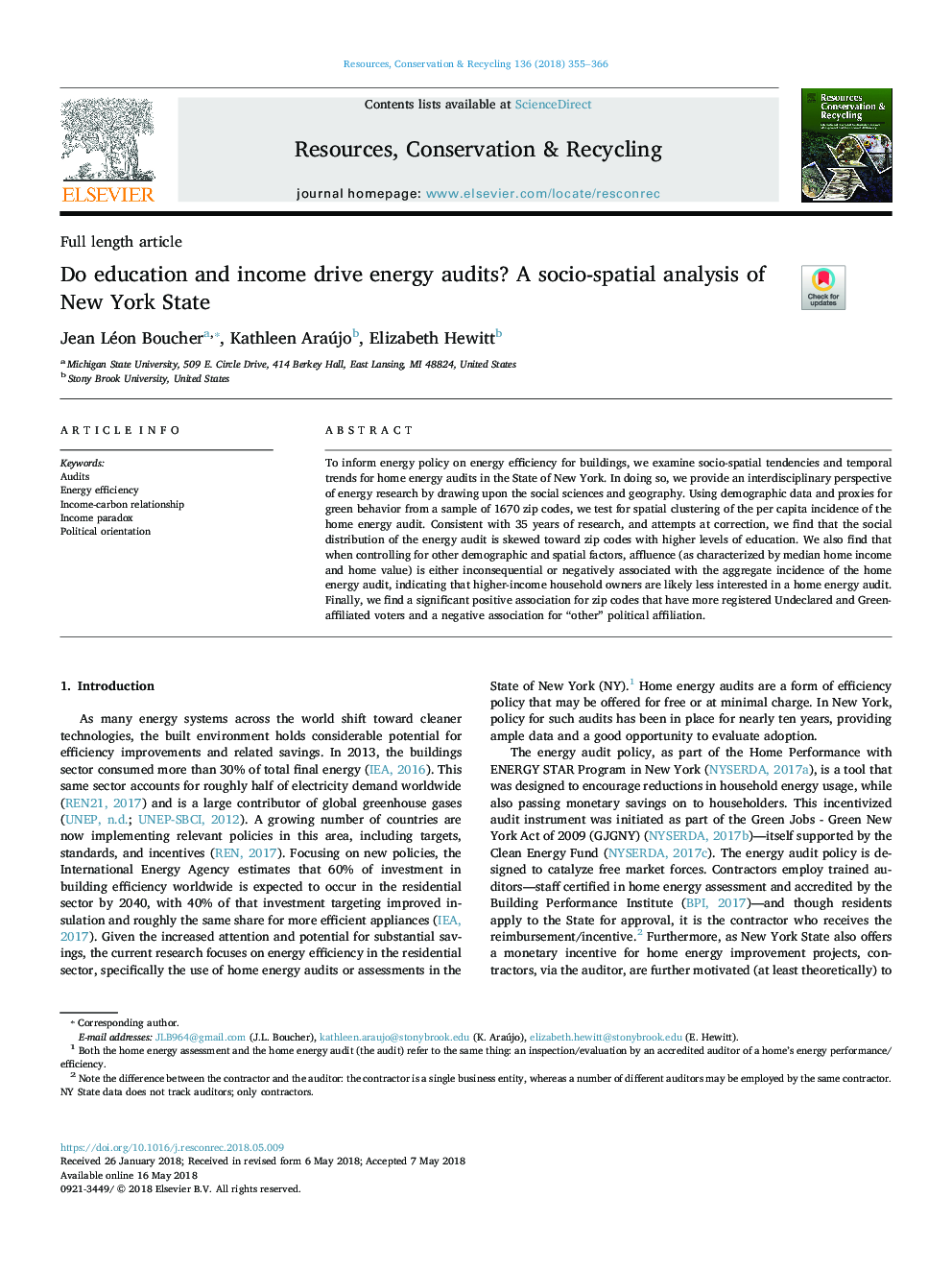| Article ID | Journal | Published Year | Pages | File Type |
|---|---|---|---|---|
| 7494093 | Resources, Conservation and Recycling | 2018 | 12 Pages |
Abstract
To inform energy policy on energy efficiency for buildings, we examine socio-spatial tendencies and temporal trends for home energy audits in the State of New York. In doing so, we provide an interdisciplinary perspective of energy research by drawing upon the social sciences and geography. Using demographic data and proxies for green behavior from a sample of 1670 zip codes, we test for spatial clustering of the per capita incidence of the home energy audit. Consistent with 35 years of research, and attempts at correction, we find that the social distribution of the energy audit is skewed toward zip codes with higher levels of education. We also find that when controlling for other demographic and spatial factors, affluence (as characterized by median home income and home value) is either inconsequential or negatively associated with the aggregate incidence of the home energy audit, indicating that higher-income household owners are likely less interested in a home energy audit. Finally, we find a significant positive association for zip codes that have more registered Undeclared and Green-affiliated voters and a negative association for “other” political affiliation.
Related Topics
Physical Sciences and Engineering
Energy
Renewable Energy, Sustainability and the Environment
Authors
Jean Léon Boucher, Kathleen Araújo, Elizabeth Hewitt,
